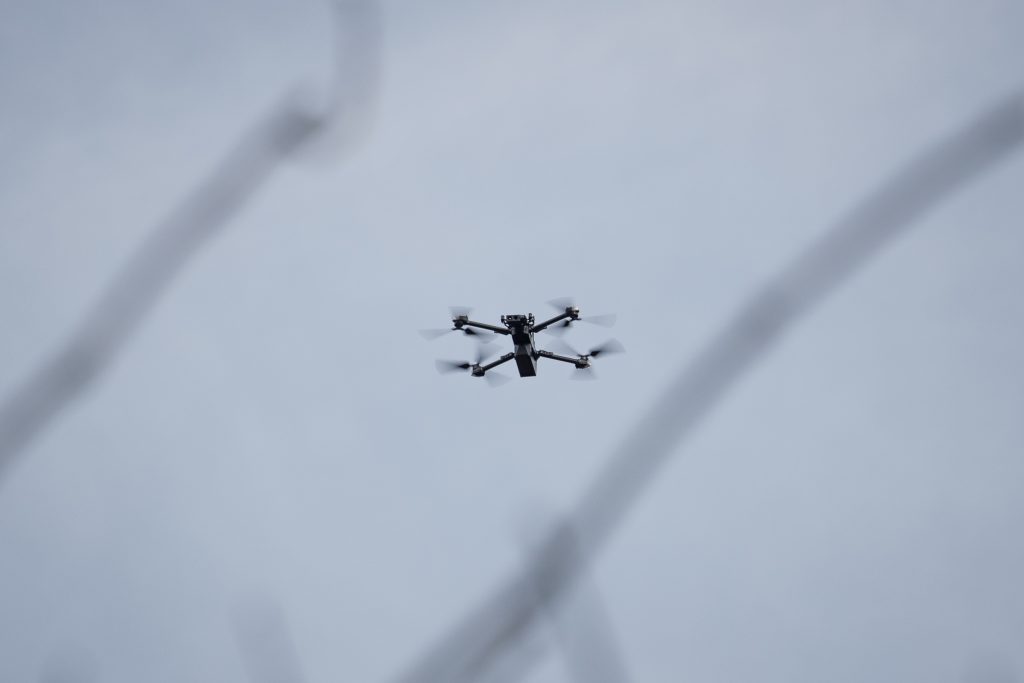USMC launches Marine Corps Attack Drone Team
The US Marine Corps has established the Marine Corps Attack Drone Team (MCADT), a team specialising in first person view (FPV) attack drones designed to integrate lessons from the proliferation of FPVs to enhance USMC lethality, according to a 31st March Marine Corps article.
“MCADT is committed to rapidly integrating armed first-person view drones into the FMF [Fleet Marine Force], enhancing small-unit lethality and providing organic capabilities that warfighters currently lack” said Major Alejandro Tavizon, company commander at the Weapons Training Battalion and officer in charge of the Marine Corps Attack Drone Team.
The team will do this by studying current wars and integrating lessons learned from the way that FPVs are employed to inform training on and integration of FPVs into the wider Marine force. It will also be responsible for providing input into the development of “cutting-edge FPV drone capabilities,” the article states.
In addition, the team is expected to compete in international competitions and provide instruction on armed FPVs to help other USMC teams prepare for competitive events. The MCADT’s first competition will be the US National Drone Association’s Military Drone Crucible Championship, where it will compete against a unit from the 75th Ranger Regiment to complete a series of challenges designed to replicate real world scenarios. They will deploy with FPVs using conventional radio-control links, fibre optic control links, and AI-enabled navigation.
“FPV drones offer squad-level lethality up to 20 kilometers for under $5,000, compared to more expensive weapons systems with less capability,” the article states. The MCADT has previously been observed operating an Archer FPV from the company Nero. Archer reportedly has a range of 20 km with a 2kg payload.

The MCADT also uses the Skydio X2D drone shown here for reconnaissance. Credit: U.S. Marine Corps Training and Education Command/Cpl Barker.
Earlier imagery from March shows the team operating the Skydio X2D drone for reconnaissance, which can have a range up to 10 km using 1.8 GHz frequencies, an endurance of 35 minutes, it includes thermal and optical payload options and operates an NVIDIA TX2 computer for AI-enabled flight planning and object avoidance.
The Marine Corps Attack Drone Team is based at the Weapons Training Battalion located at Marine Corps Base Quantico, Virginia, which is responsible for teaching marines marksmanship and other key combat skills as well as staying up to date with the latest technological developments. The Weapons Training Battalion was tasked with organising the MCADT in early January 2025 with the goal of extending the lethal range of USMC rifle battalions from 1 km out to 20 km.
Calibre comment
Strictly speaking, the USMC has had access to similar capabilities for some time. Its forces have regularly exercised with the Switchblade 300 from Aerovironment. The Block 20 Switchblade 300 was even selected by the USMC for its Organic Precision Fires-Light (OPF-L) programme of record in April 2024. The Block 20 Switchblade 300 provides a range up to 30 km with a range extender and a flight time of 20 minutes, the entire munition – including its explosive payload – weighs 1.68 kg.
The cost of Switchblade is unknown, but the lightweight payload may limit its lethality. Additionally, as a fixed wing design it must move constantly to stay airborne, whereas an FPV would be capable of hovering over a given area and waiting in place for a target. The Nero FPV also provides enhanced resistance to jamming as well as allowing the operator to control the drone at a distance from the radio antenna that transmits controls to the system. The available data suggests that there is not much difference between the Switchblade 300 and an FPV like the Neros Archer. The primary differentiator appears to be cost and lethality, which may be driving the USMC’s focus on FPVs alongside its existing capabilities.
By Sam Cranny-Evans, published on 2nd April, 2025.

Sign Up for Updates!
Get insider news, tips, and updates. No spam, just the good stuff!





